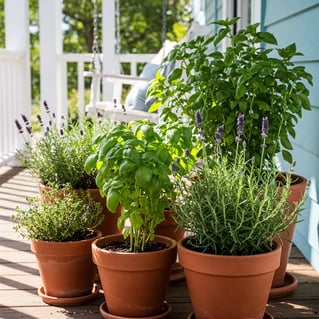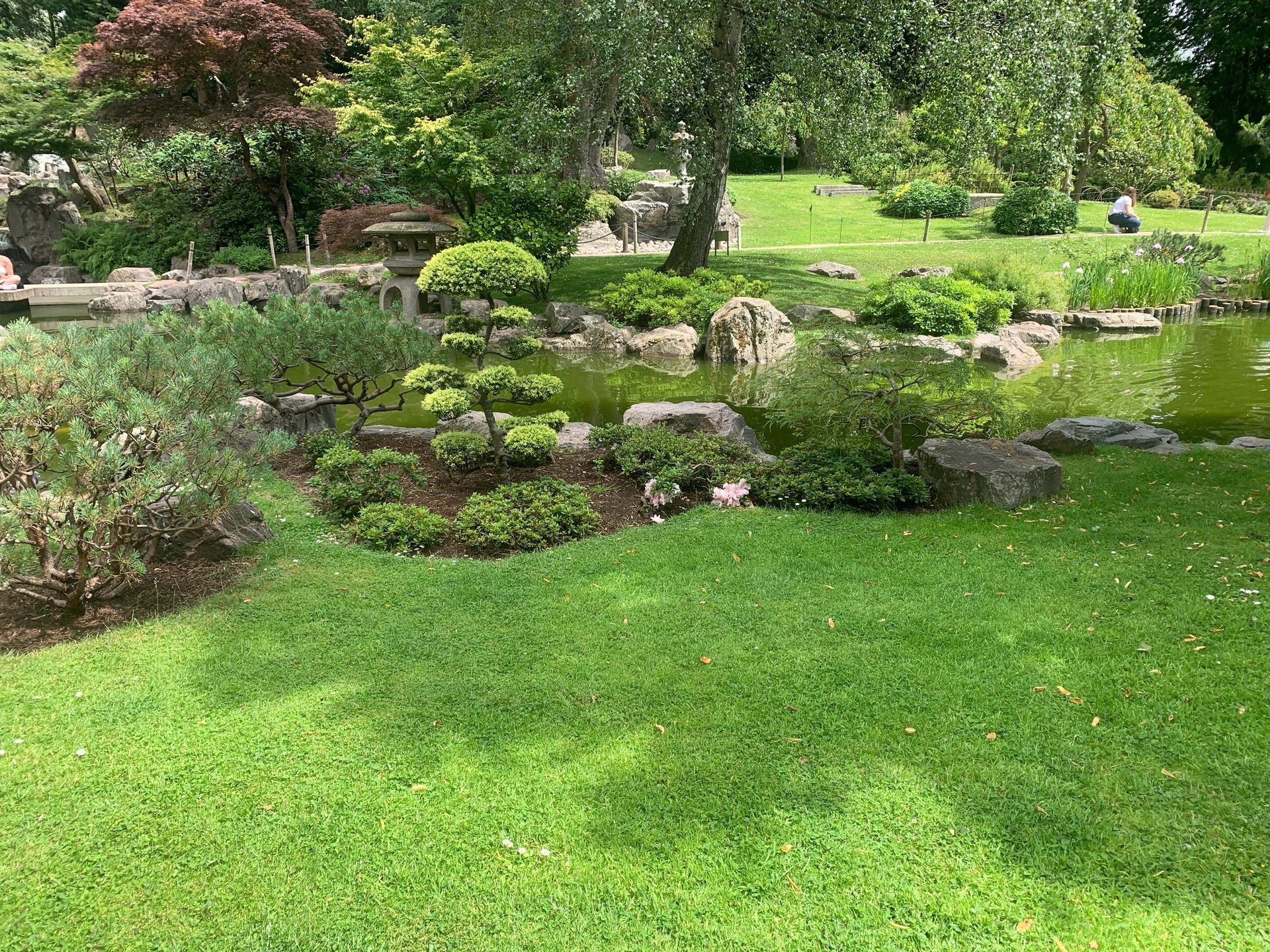Herb Garden: How to Grow Your Own Culinary Oasis at Home
There’s something incredibly satisfying about stepping outside and snipping fresh herbs for your cooking. Whether you have a sprawling backyard or a small apartment balcony, starting a herb garden is easy, rewarding, and budget-friendly. In this guide, you’ll learn how to plant herbs in pots or directly in the ground, with tips to keep basil, mint, and rosemary thriving.
GARDEN ELEMENTS


There’s nothing quite like the flavor of fresh herbs snipped straight from your own garden. Whether you’re a seasoned home cook or just starting out in the kitchen, growing your own herbs is a simple, satisfying way to elevate your meals—and it doesn’t require much space or experience. From a sunny windowsill to a backyard plot, an herb garden can thrive just about anywhere.
Step 1: Choose Your Setup — Pots or Ground
Pots (Container Gardening)
Perfect for balconies, patios, or windowsills, container gardening allows you to have a garden wherever you have space. Feel free to place herb containers throughout the garden to enhance your garden design and provide beautiful foliage and scents!
What you need: Containers with drainage holes, high-quality potting mix, and a sunny spot (4–6 hours of sunlight per day).
Tip: Use separate containers for aggressive growers like mint to avoid overcrowding.
Planting in the Ground
If you’ve got yard space, dig in! Choose a location that gets plenty of sunlight and drains well. Plant all of your herbs in one location for a comprehensive kitchen garden.
Prep the soil: Loosen it to about 8 inches deep, mix in compost, and rake it level.
Spacing: Give each herb room to spread—generally 12–18 inches apart.
Step 2: Decide what herbs you want to plant. While your only limitation on the number of herbs you plant is space, I recommend you plant what you like to eat! Here is a list some popular herbs and their usage:
Herb: 🌿Basil
Culinary Use: Pesto, pasta, salads, pizza
Planting Instructions: Plant after last frost, in full sun. Sow seeds or transplants in well-drained soil. In pots, use well-drained soil and keep in full sun.
Care Tips: Keep soil moist but not soggy; pinch off flowers and harvest leaves from the top to keep the plant bushy.
Herb: 🌿Mint
Culinary Use: Teas, cocktails, tabbouleh, desserts
Planting Instructions: Mint is a vigorous grower. Plant in spring or fall. Use containers to control spread. Prefers part shade to sun.
Care Tips: Water regularly; trim often to prevent legginess and control growth.
Herb: 🌿Rosemary
Culinary Use: Roasts, potatoes, bread, soups
Planting Instructions: Plant in full sun with sandy, well-drained soil. Start from cuttings or transplants. In cooler climates, consider growing in a pot you can bring indoors in winter.
Care Tips: Let soil dry between waterings; prune to shape and improve airflow.
Herb: 🌿Parsley
Culinary Use: Garnish, sauces, salads
Planting Instructions: Plant in spring, in sun to part shade. Sow seeds directly or transplant seedlings.
Care Tips: Keep soil evenly moist; cut outer stems to harvest and encourage regrowth.
Herb: 🌿Thyme
Culinary Use: Poultry, soups, marinades
Planting Instructions: Plant in full sun, in well-drained soil. Start from seed, cuttings, or transplants.
Care Tips: Allow soil to dry slightly between waterings; trim after flowering.
Herb: 🌿Oregano
Culinary Use: Pizza, tomato sauces, grilled meats
Planting Instructions: Plant in full sun. Sow seeds indoors or transplant outside after frost.
Care Tips: Water when dry; harvest regularly to encourage bushy growth.
Herb: 🌿Cilantro
Culinary Use: Tacos, salsas, curries
Planting Instructions: Plant in cool weather; prefers full sun to light shade. Sow directly in the ground.
Care Tips: Bolts quickly—harvest often; replant every few weeks for continuous supply.
Herb: 🌿Chives
Culinary Use: Eggs, potatoes, dips
Planting Instructions: Plant in spring. Grow from seeds or divisions in full sun to part shade.
Care Tips: Keep soil moist; divide clumps every 2–3 years to maintain vigor.
Herb: 🌿Dill
Culinary Use: Pickles, fish, sauces
Planting Instructions: Sow directly in sunny soil in spring; doesn't transplant well.
Care Tips: Water regularly; thin seedlings to prevent overcrowding.
Herb: 🌿Sage
Culinary Use: Stuffing, sausages, roasted vegetables
Planting Instructions: Plant in full sun. Sow seeds or transplant into well-drained soil.
Care Tips: Prune in spring to promote new growth; avoid overwatering.






Creating your own herb garden is one of the most rewarding ways to connect with nature, enhance your meals, and add beauty to your space—all with minimal effort. Whether you’re growing basil on a sunny windowsill or cultivating a lush container of mint and rosemary in the backyard, herbs are forgiving, beginner-friendly plants that offer vibrant foliage, fragrant foliage, and a steady supply of fresh flavor for your kitchen.
With just a little care and attention, your herb garden will become an edible oasis that nourishes both your cooking and your creativity!




